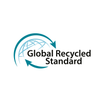What is COP27 and why does it matter?
World leaders are currently meeting to discuss the question of how to solve climate change at COP27 in Egypt. At its heart, the climate crisis requires us to consider the way we live and consume resources on a global scale.
So what is COP27, and are these climate conferences just producing hot air?What is COP27?
Every year, the United Nations holds conferences to bring together the world governments to agree on steps to limit global warming and greenhouse gas emissions. These gatherings are called COP (conference of the parties), and are governed by the United Nations Framework Convention on Climate Change (UNFCCC).
Established in the early 90’s, the UNFCCC has an ultimate objective - to stabilise and reduce harmful global greenhouse gas emissions in order to avoid human-induced threat to our ecosystems (and the subsequent damage to food production and economic stability).
Basically, it offers a global response to the climate emergency, with countries treaty-bound to find ways to avoid climate change and reduce their emissions.
This year is the 27th meeting, hence COP27.
Why is COP27 important?
At the COP, countries commit to certain actions and targets that they will work towards with the overall goal of limiting climate change.
Many of these agreed targets become legally binding.
Previous conferences have raised awareness of the crisis our planet is facing. They’ve also helped to start conversations for change, and they’ve provided a platform to measure and report on activities aimed at reducing dangerous emissions.
What is the focus of COP27?
The focus of COP27 is on ensuring that previous target agreements are being implemented, as well as the introduction of a new agenda.
Called The Sharm-El-Sheikh Adaptation Agenda, it’s aimed at improving climate resiliency of more than 4 billion people against climate-related risks (to help protect those living in the most climate-vulnerable communities) by 2030.
What has COP previously achieved?
1997 - The Kyoto Protocol was adopted, seeing a commitment to reducing greenhouse gas emissions across industrialised countries. However, unfortunately large carbon polluters like China and the United States did not become part of the commitment.
2015 - The Paris Agreement set the target to limit global warming to 1.5 degrees Celsius above pre-industrial levels. However, the recent UN ‘Emissions Gap Report’ found that the world is heading for a catastrophic 2.6 degrees Celcisus by the end of the century, with scientists warning this would be disastrous for the environment and for humanity.
While there is definitely a need for more proactive action, it’s important that these conversations continue on a global scale.
COP27 and the Fashion Industry
It’s no secret that the fashion industry needs to take drastic action to reduce its greenhouse gas emissions, and to improve sustainability across design, manufacturing and recycling processes.
The textile and fashion industry is a major contributor to global emissions and continues to face challenges to curb its emissions at most points along the chain. This includes the need to improve energy efficiency and use of renewable and sustainable resources. It also includes the need to address consumer demand through support for slower and more circular cycles of purchasing (with the aim to reduce unsustainable levels of waste).
A number of fashion brands have committed to the Fashion Industry Charter for Climate Change, with goals including cutting emissions by half by 2030 to reach net zero by 2050.
Ways to contribute to a more sustainable future
While there is still a long way to go, it’s essential that we continue to educate ourselves on the issues facing our planet, as well as the ways in which we can reduce our impact.
Some actions we can all take today include:
- Considering our purchases carefully, and buying what we need with thought to the waste at the end of our use of an item
- Choosing to buy from brands who are actioning their values when it comes to sustainability, for example: by using non-toxic and recyclable materials, supporting ethical supply chains, and offering access to product recycling.
Supporting positive change
In Australia, a whopping 800,000 tonnes of textiles end up in landfill in Australia every year! And, with 204 million underwear items imported into Australia each year, that’s a lot of waste!!
At Underwear for Humanity, we live by our values and exist to create positive change. That’s why, we saw that there was no underwear recycling option here, and created one. And, we offer it for free to our customers (and hopefully to everyone in the future).
If you’re searching for ethically-produced underwear that’s made to last, we offer something for every body. Each underwear purchase also supports other humans in need.
You can find out more about our underwear here, and learn more about the ways in which we’re contributing to positive social and environmental change below:









